Medical devices
search
news
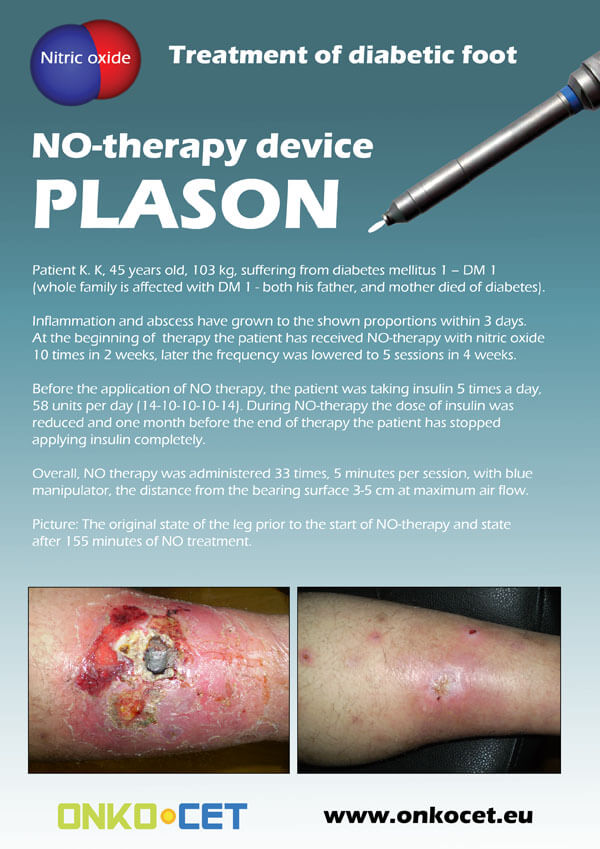
The PDF with the short report with pictures from the therapy of a diabetic foot can be viewed or downloaded here.
The pictures from the treatment of unhealing wounds an be found here:
http://www.onkocet.eu/en/produkty-detail/220/1/
The pictures from the treatment of unhealing wounds an be found here:
http://www.onkocet.eu/en/produkty-detail/293/1/
ONKOCET Ltd. has exhibited the devices from its portfolio on the MEDTEC UK exhibition in Birmingham, April 2011 through our partner Medical & Partners.
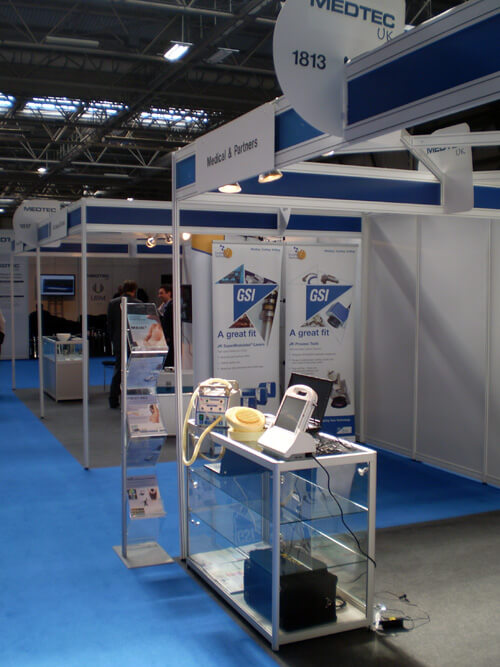
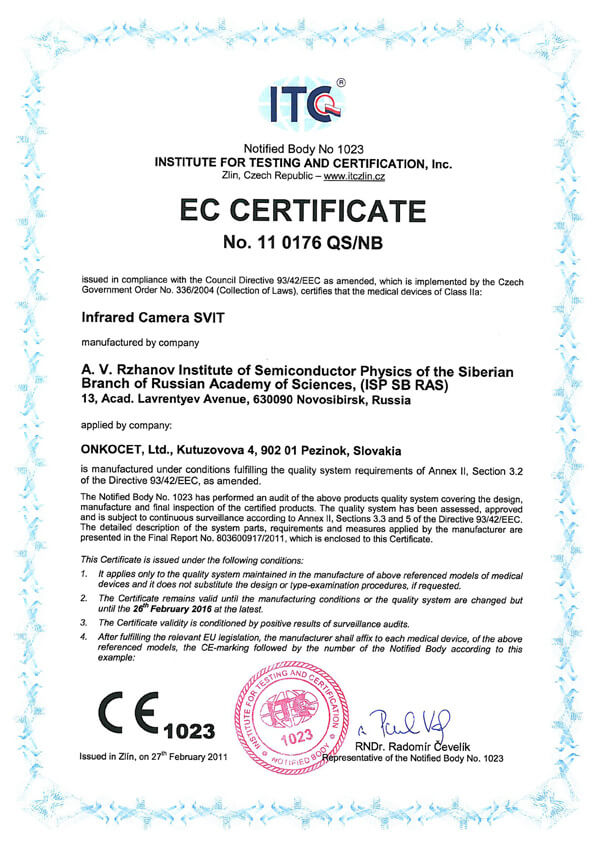 The ONKOCET company has successfully reached the certification of yet another medical device, Infrared Camera SVIT. The Certificate can be found here. The videos from the device operation can be found here.
The ONKOCET company has successfully reached the certification of yet another medical device, Infrared Camera SVIT. The Certificate can be found here. The videos from the device operation can be found here.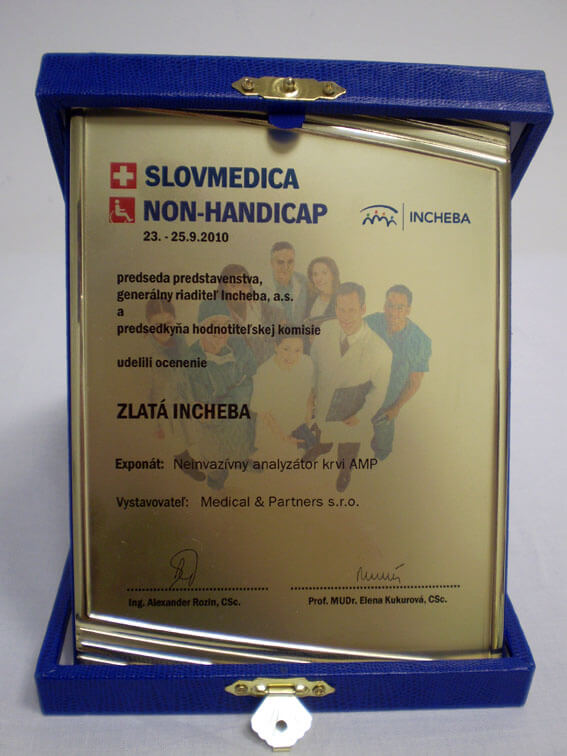 Our device, the non-invasive blood analyzer AMP has won the Golden Incheba prize at a medical exhibition SLOVMEDICA - NON-HANDICAP 2010. A big thank you goes to the organizers of the exhibition for acknowledging the quality of our device and to the exhibitor, the Medical & Partners company, for introduction of the AMP device to the medical public again.
Our device, the non-invasive blood analyzer AMP has won the Golden Incheba prize at a medical exhibition SLOVMEDICA - NON-HANDICAP 2010. A big thank you goes to the organizers of the exhibition for acknowledging the quality of our device and to the exhibitor, the Medical & Partners company, for introduction of the AMP device to the medical public again.We are pleased to inform our business partners, that our company has succesfully finished the certification process of Concor Soft Contact Lenses.
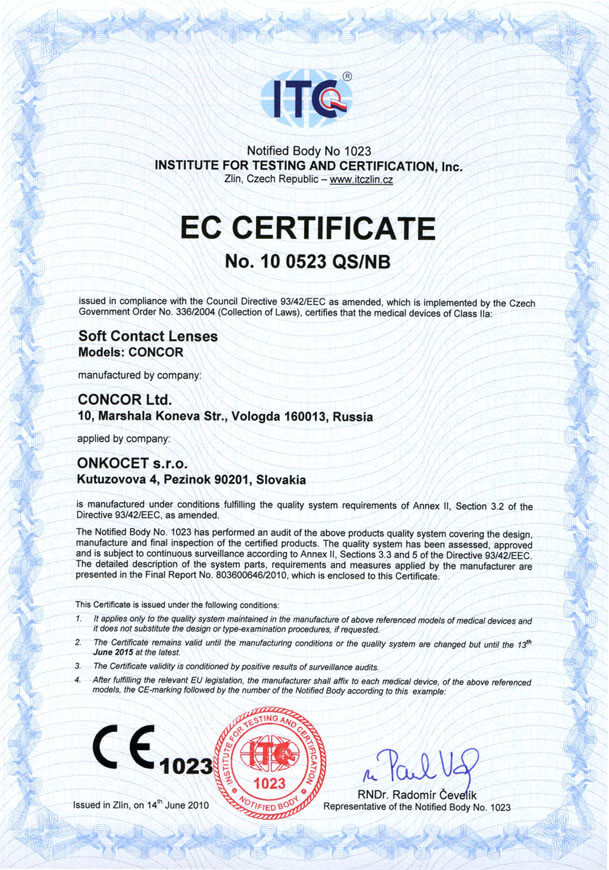 You can find the certificate here.
You can find the certificate here.More information on Concor Soft Contact Lenses go to section Medical preparations/Concor soft contact lenses, or follow this link.
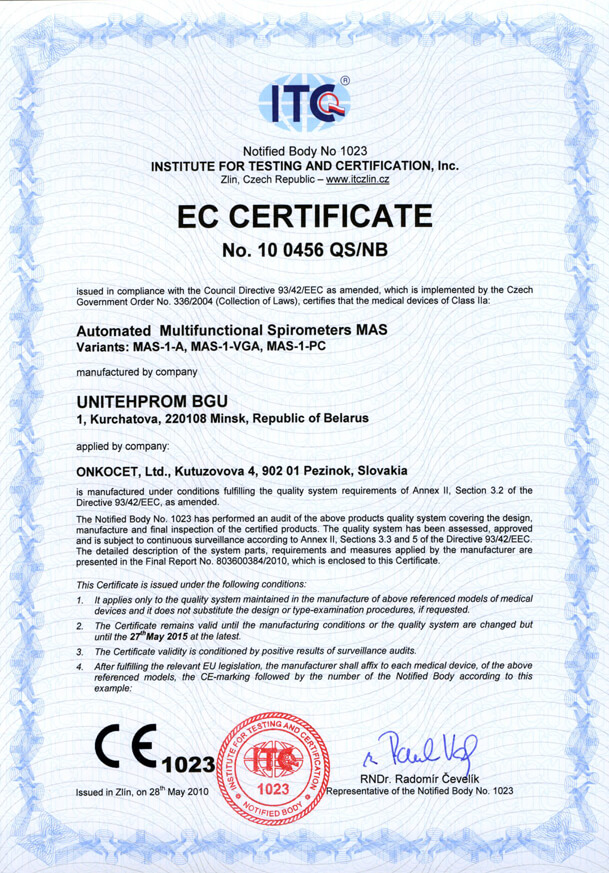 Our company has finished the certification process for another medical device, computerized spirometer MAS-1K with oximeter. You can find the device certificate here.
Our company has finished the certification process for another medical device, computerized spirometer MAS-1K with oximeter. You can find the device certificate here..jpg) Since May 2010 there is a new version of AMP device available.
Since May 2010 there is a new version of AMP device available.Follow this link if you want to see the pictures and specifications of the device.
http://www.onkocet.eu/en/produkty-detail/293/1/
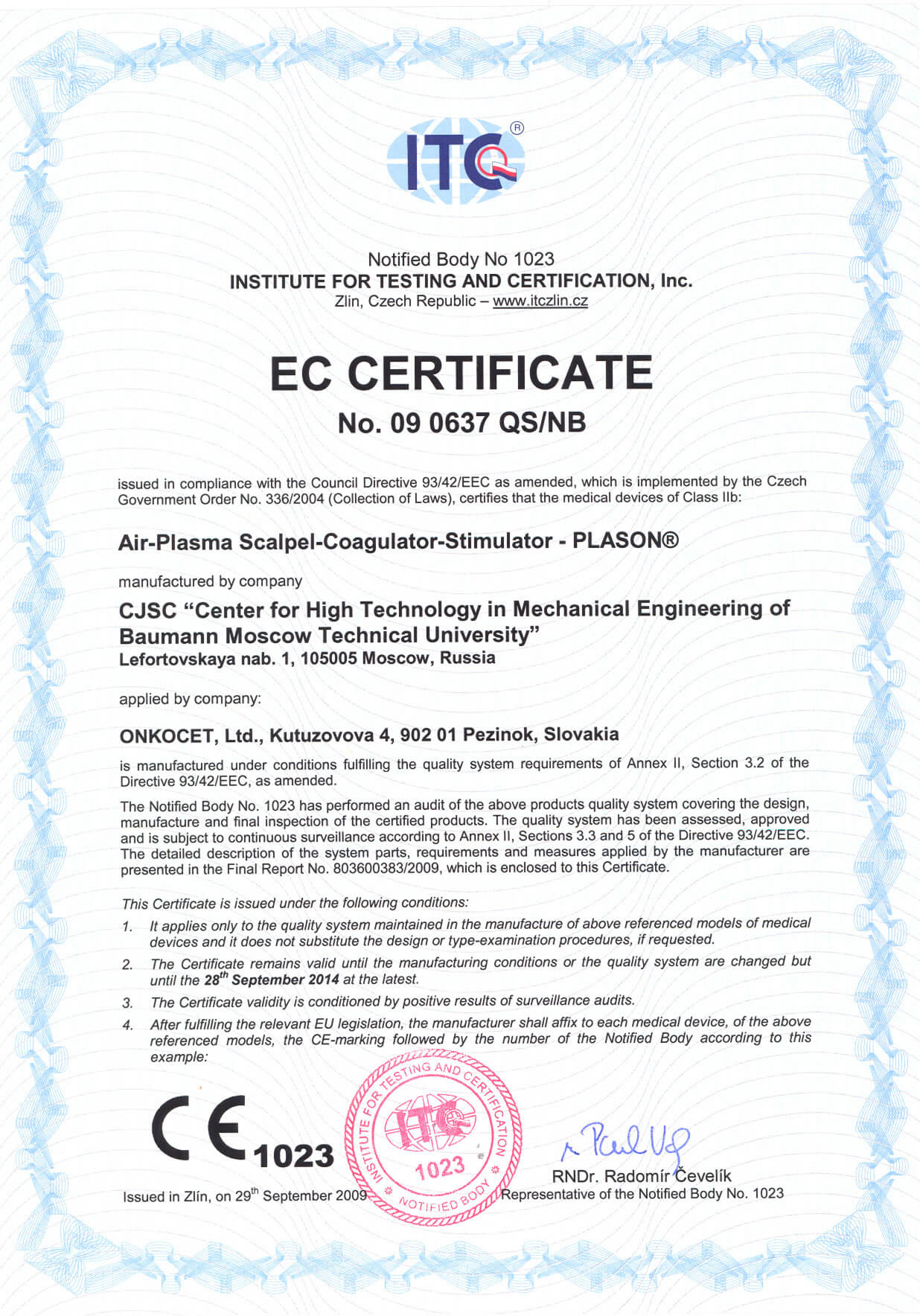 Dear partners,
Dear partners, In October 2009 we have received CE certificate for another device from our portfolio, NO therapeutical device PLASON. You can find more information about this revolutionary device, used for healing of unhealing wounds, diabetic foot, or for cosmetical purposes, at our webpage, section "Medical devices" -> PLASON-NO Therapy.
.gif)
Best regards
Team of ONKOCET Ltd. company
Function of ANESA with USPIH program

Function of the ANESA device with USPIH programme
A method of the ANESA device is based on correlation of heat generation and produced work in a system of internal circulation of the blood. The heat is generated as a result of chemical reaction of nitrogen, oxygen, hydrogen and carbon and also substances without nitrogen. The changes of temperatures determine an activation of chemical elements, first of all oxygen. This activation brings on a changing of correlation of nitrogenous compounds, hydrogenous compounds and solubility coefficient of oxygen. All of them correlate with changes of an oxygen solubility coefficient and a generation rate of CO2. They also are self-regulating and change a protein and lipid rate of cellular membrane.
These items determine an activity of phospholipid factor of thrombocytes. There is such factor practically in all blood cells. The course of these chemical conversions is under genetic control of hemapoiesis (potentiality of primitive blood cell differentiation is in the range of 49023 of a primitive blood cell division). This process depends on the rate of oxygen supply, the activity of phospholipid factor of thrombocytes, solubility coefficient of oxygen, pH medium and temperature.
The important thing of these processes is a functioning (working) of erythrocytes' hemoglobin. It depends on conversion of NH and COOH bonds. They are components of glycine and succinic acid (both are the parts of globin). The course of these reactions is cyclic. It is continuous process of substance transition: gas-liquid-crystalline substance. The rate of crystallization depends on activity of phospholipids, triglycerides and cholesterol. Their correlation depends on changes of solubility coefficient of oxygen. This coefficient also influences on phospholipid factor of thrombocytes.
The ANESA device has 5 sensors, which should be placed in bioactive fields of a men's body (2 sensors - on the left and the right bifurcation of aorta, 2 sensors - in the left and the right axilla creases and 1 sensor - in the navel region - the region of fusion of aorta, descending vein and lymphatic duct).
There is no influence to a patient during examination. The device determines the influence of environment to a patient (the influence of atmosphere pressure, solar heat etc.) or rather the degree of this influence in correlation with heat generation and emission (an enthalpy and an entropy of energy). They direct a genetic code of cellular elements of blood and biochemical parameters of homeostasis generation.
The method in whole is widely described in monograph by A.Malykhin "Thermoregulation of an organism and vegetovascular paroxysms".

